I’m excited to share with you my Northern Ireland Travel Guide! It features 24 incredible things to do for every hour of the day.
I recently travelled to Northern Ireland with the sole purpose of tracking down 24 amazing moments travellers can experience…one for each hour of the day.
My very first trip a few years back had been spent exploring Belfast and venturing up to the Causeway Coast on a day trip, but I had left barely scratching the surface. That’s why I was thrilled to be coming back to Northern Ireland, this time with plenty of time to spare and an itinerary that would take me across the country.
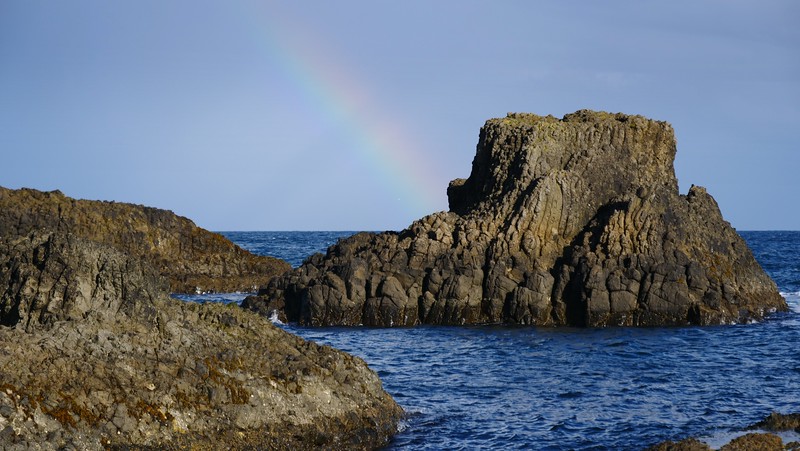
So, why do travelers love visiting Northern Ireland? It’s a combination of breathtaking landscapes, rich history, warm people, thrilling adventures, and, of course, the delicious food. But what truly makes Northern Ireland stand out are its people. Warm, witty, and always ready with a story, they make you feel at home.
From food tours to Game of Thrones experiences, and coastal walks to haunted castle visits, here’s a little taste of things to do and what I experienced in this Northern Ireland travel guide.
Things to do in Northern Ireland: 24 Amazing Experiences!
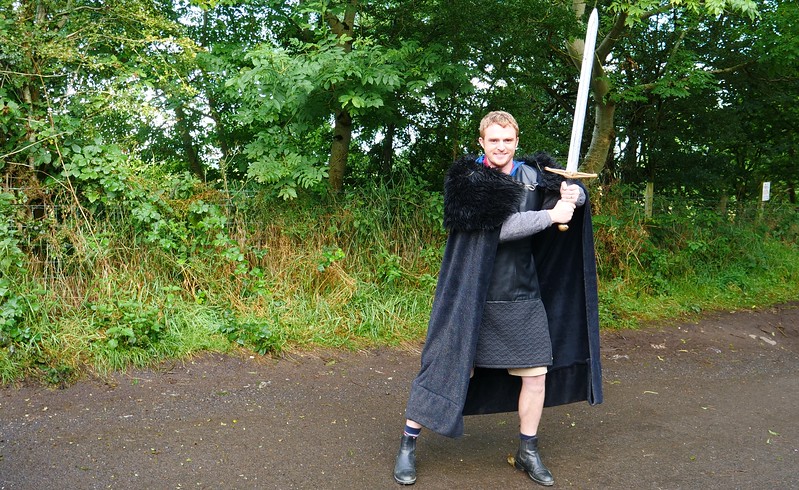
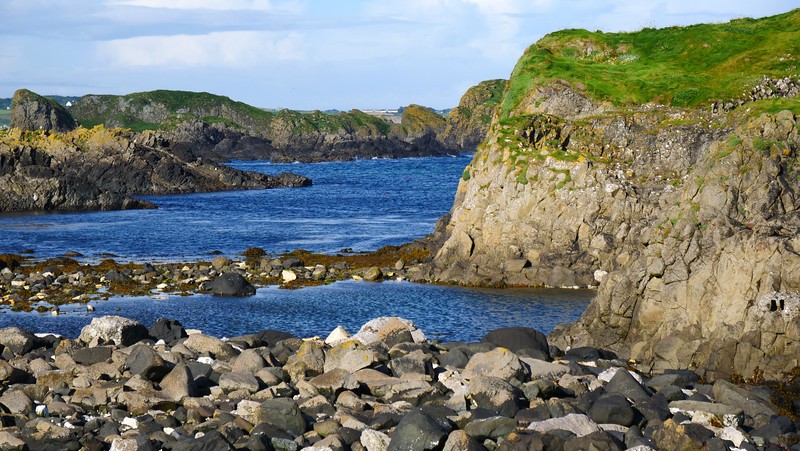


#1 01:00 – Have cocktails at The Merchant Hotel
One of my things to do in Belfast was having a cocktail at The Merchant Hotel. With an elegant and classy atmosphere that isn’t pretentious, and a jaw-dropping selection of cocktails, it’s easy to see why this cocktail bar was voted best in the world by Tales of the Cocktail. It’s a fun spot to either end the evening or kickstart the night depending on your style.
The Merchant Hotel whispers tales of its storied past from every corner. Originally built as a bank in the 19th century, its transformation into a luxury hotel has been nothing short of spectacular. The architecture alone is a feast for the eyes. It features a stunning façade and exquisite interiors that pay homage to its heritage. Think grandiose marble, soaring ceilings, and opulent decor that transport you to a bygone era.
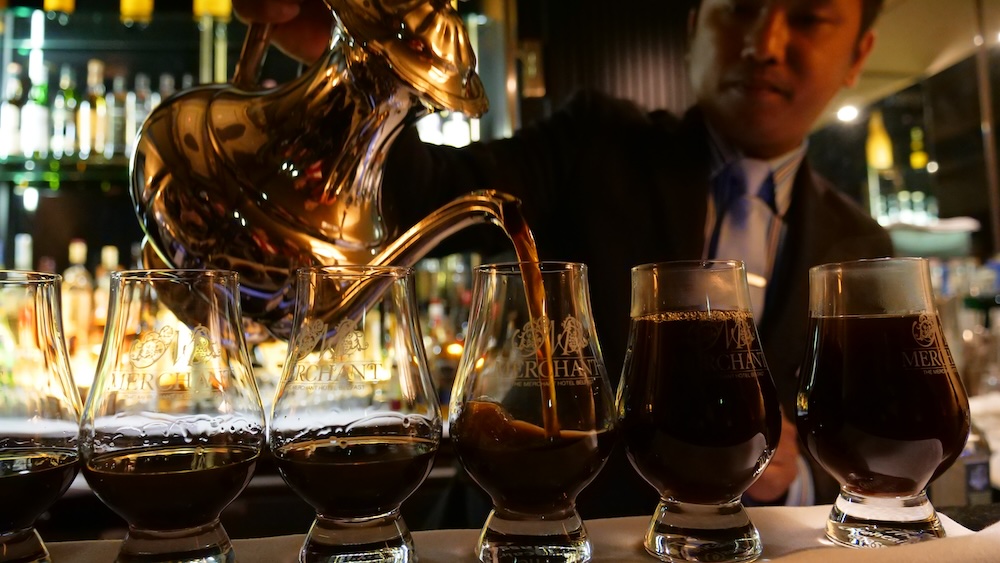
Location, location, location – the Merchant Hotel boasts an enviable one. Situated in the Cathedral Quarter, it’s the perfect base to explore Belfast’s rich tapestry of culture, history, and entertainment. Cobblestone streets, buzzing pubs, galleries, and shops are just steps away.
What truly sets the Merchant Hotel apart, though, is its unparalleled service. I felt like I was treated like royalty. The staff goes above and beyond to ensure you feel right at home whilst sipping on your cocktail.
Location: Merchant Hotel – Address: 16 Skipper Street, Belfast
#2 02:00 – Enjoy the nightlife at The Bullitt Hotel
Additionally, Belfast has legendary nightlife and after hitting up a few pubs I finished the night at Bullitt Hotel where there was a live DJ set. This was another lively spot with great cocktails, so come thirsty!

When the sun dips below the horizon in Belfast, the city doesn’t sleep; it comes alive for travelers and locals alike! There’s something absolutely magical about the atmosphere of Belfast’s nightlife. I would describe it as vibrant, diverse, and, frankly, a lot of fun. You’ve got pubs. You’ve got discos. And everything else in between.
Whether you’re in the mood for a quiet pint, a night of dancing, or simply soaking in the ambiance of this lively city, Belfast delivers. It’s not just the places or the activities; it’s the feeling of being welcomed into a community, of experiencing the city’s heartbeat at its most vibrant. That’s why travelers find themselves falling in love with Belfast after dark, time and time again.
Location: Bullitt Hotel – 40a Church Lane, Belfast
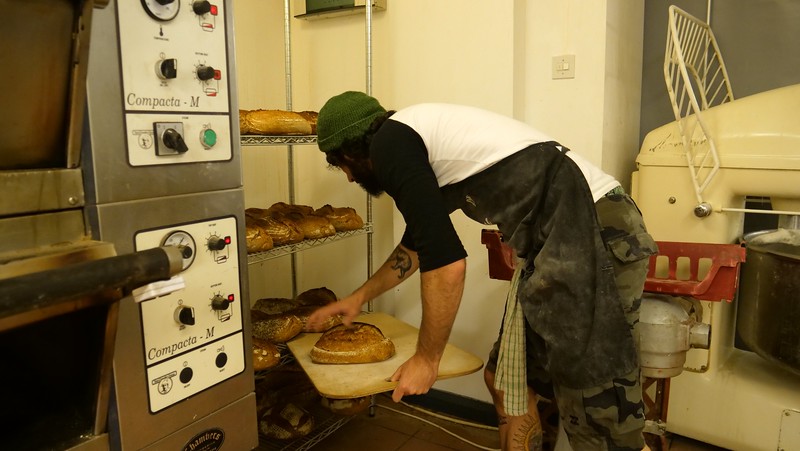
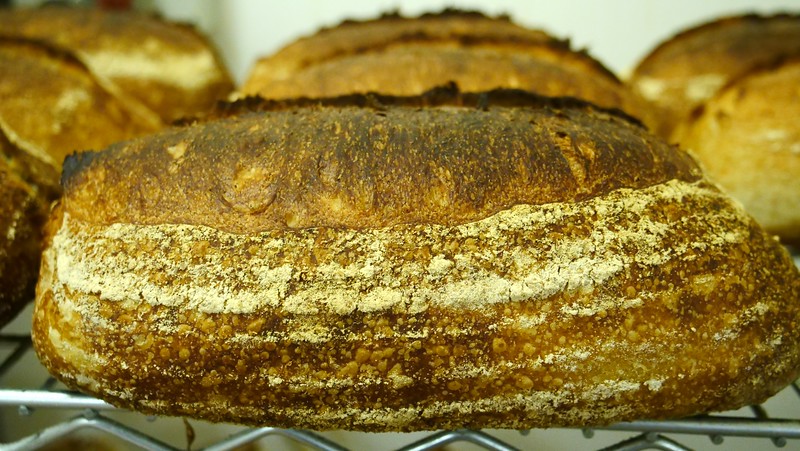
#3 03:00 – Bake some sourdough bread
Now for a rather unusual activity: if you’re an early bird, how about baking some sourdough bread?
I joined Dara at the Ursa Minor Bakehouse, where he is up at 3 am daily to make his famous sourdough bread. Furthermore, his bread picked up awards at the World Bread Awards in 2016, so even if you can’t rise early, swing by for a fresh loaf later in the morning to see what it’s all about.
There’s just something about Irish sourdough bread that tickled my tastebuds from the very first bite. It’s a bit like Ireland itself—rustic, hearty, and delightful. It is made with only the essential ingredients—flour, water, salt, and the all-important sourdough starter. The process, relying on natural fermentation, gives it that distinctive tangy flavor and chewy texture. I just love the irresistible contrast—the play between the crunchy exterior and the pillowy interior.
Whether it’s slathered with rich, creamy Irish butter, topped with smoked salmon, or dipped into a hearty bowl of stew, sourdough complements a wide array of Irish dishes. It’s common to be greeted with freshly baked sourdough in homes, B&Bs, and cafes across the country. I don’t know what else to say! You’ve gotta try it!
Location: Ursa Minor Bakery – 45 Ann Street, Ballycastle [10am to 4pm (Tue-Sat)]
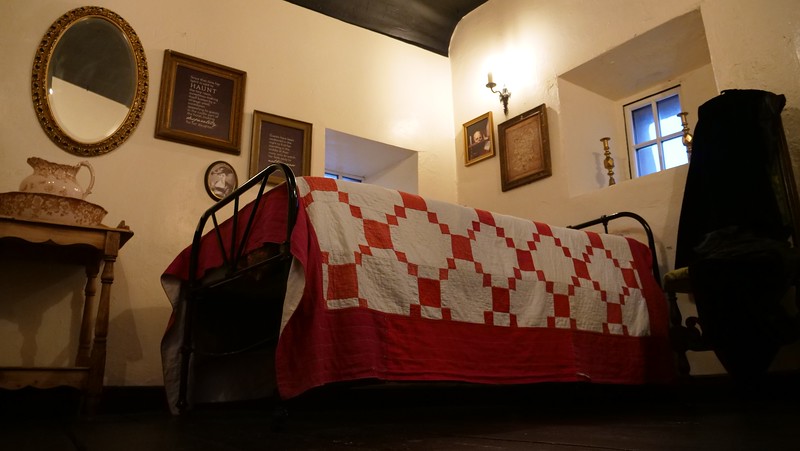
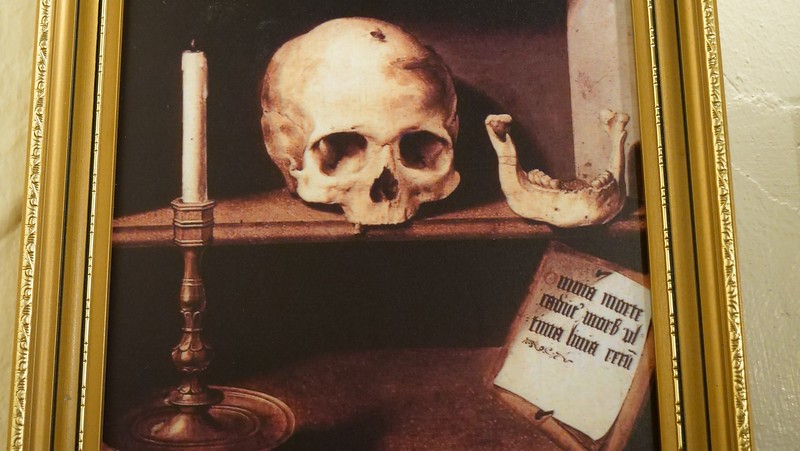
#4 04:00 – Sleep in a Haunted Castle
If you dare muster up the courage, consider visiting the haunted room located at Ballygally Castle, which is home to the ghost of Lady Isobel Shaw.
The story of Lady Isabella is one of those tales that linger with you, long after you’ve heard it. The story goes that after being locked in her room and starved by her husband, she fell to her death from the window. This story isn’t just a ghost tale; it’s a mother’s heartbreaking story, woven into the very fabric of Ballygally Castle. Guests often report encounters with a gentle spirit, a soft presence that seems to be searching, always searching… perhaps for the child she never got to hold.
Mediums have been invited to spend the night at the castle and they’ve reported that there are more ghosts than actual guests.
Would you spend the night here?
Location: Ballygally Castle – Coast Road, Ballygally
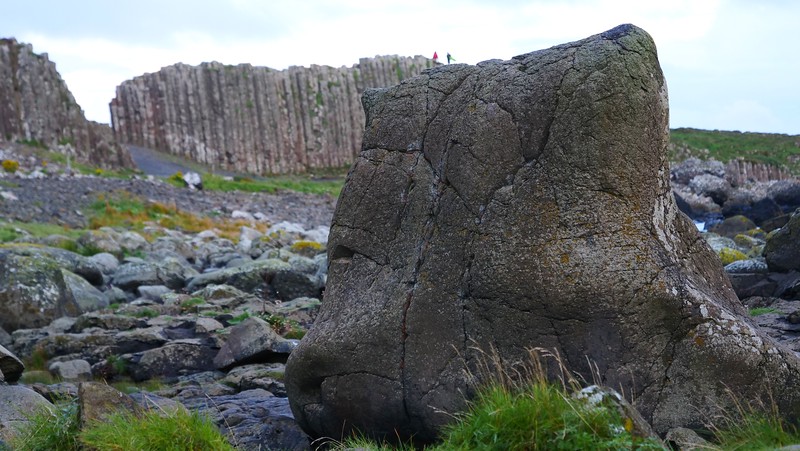
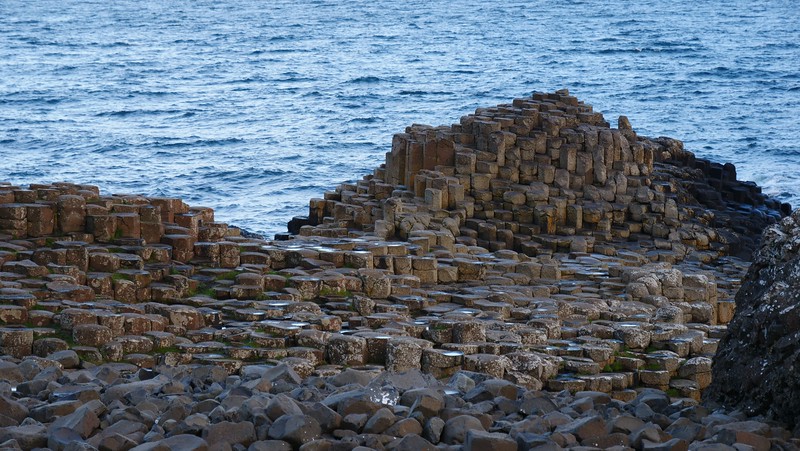
#5 05:00 – Watch sunrise at Giant’s Causeway
This was my second time visiting Giant’s Causeway, but this time around, I beat the crowds. Hence, if you don’t mind setting an alarm while on holiday, it’s worth getting up early and visiting for sunrise.
The Giant’s Causeway, with its interlocking basalt columns, is a feast for the eyes. Its 40,000 hexagonal columns stretch out into the sea, as if a giant had indeed paved his way across the waters. Walking on these stones, formed by volcanic eruptions 60 million years ago, feels like stepping back in time as you visit this UNESCO Heritage site. It’s a visual spectacle that defies words; it made me ponder the incredible forces that shaped our world.
But what’s beauty without a story? The Giant’s Causeway is steeped in legends, most famously the tale of Finn McCool, the giant who built this causeway to walk to Scotland to challenge his rival. When you visit this place for sunrise, it’s easy to imagine these tales to be true.
Indeed, the Giant’s Causeway is more than just a great place to visit—it’s a treasure of the natural world. In my opinion, it’s an absolute must to add to your itinerary!
Location: Giant’s Causeway – 44 Causeway Road, Bushmills
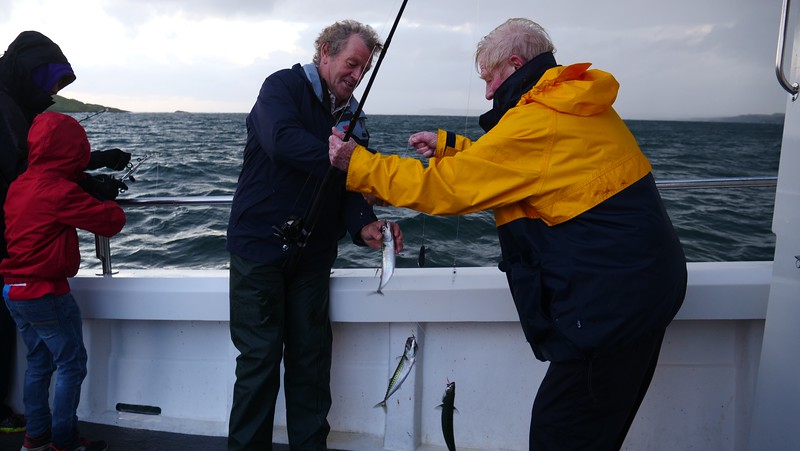
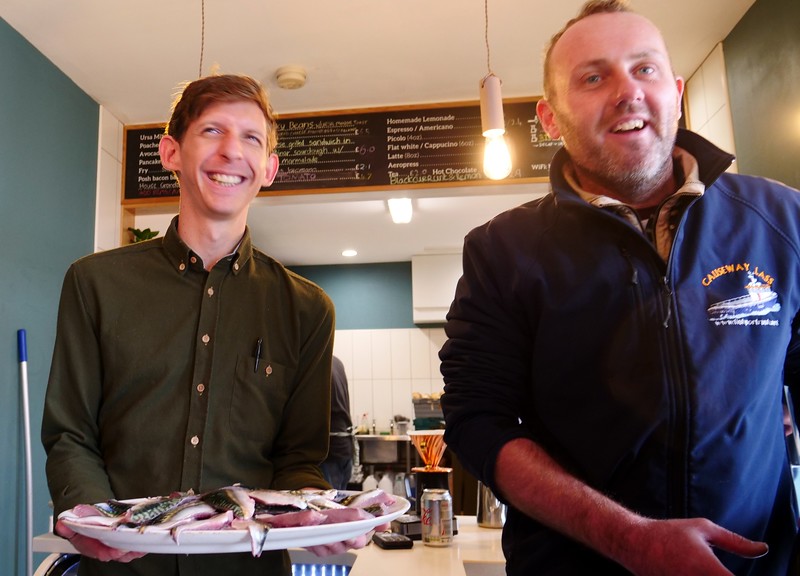
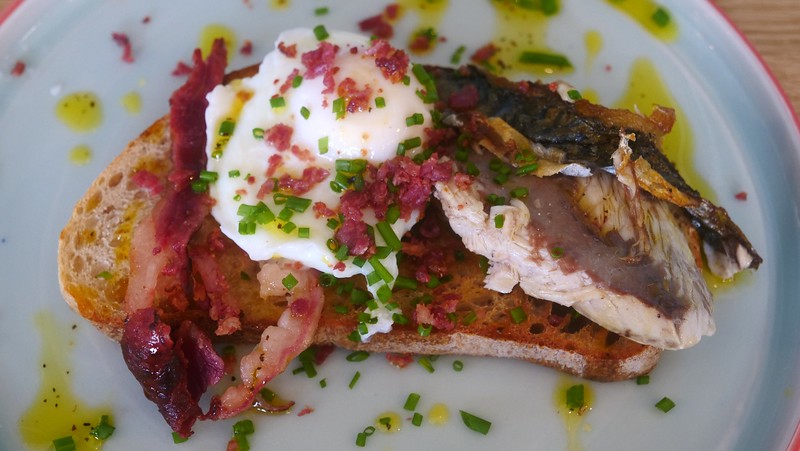
#6 06:00 – Take the Catch & Sea Tour
Did you arrive in Northern Ireland with your sea legs? If so, you can join the Catch & Sea Tour with experienced fishermen for their early morning catch.
Not only do you get to experience the dramatic coastline of the Causeway Coast; however, you can even catch your own breakfast.
Also, once you make it back to land, the catch is cooked up for breakfast along with a lovely assortment of baked bread, cheeses, chutney, butter and freshly brewed coffee. The perfect way to start the morning!
I’ll warn you though…it can be pretty rough out on the seas!
If you’re okay with that then proceed. Otherwise, it’s possibly wise to consider another activity.
Location: Babushka – S Pier, Portrush

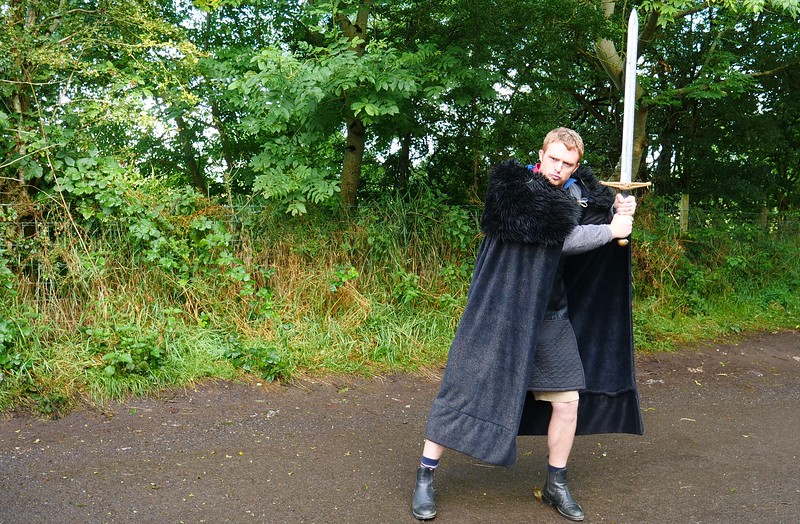

#7 07:00 – Visit the Dark Hedges
Any Game Of Thrones fans out there?
Eat your heart out at the Dark Hedges where you’ll find the famous tree-lined avenue with an opportunity to dress up in costume while wielding a sword on horseback.
Ensure that you bring extra batteries for your camera. The atmospheric tunnel is a major tourist attraction so arrive early to beat the crowds.
The Dark Hedges gained worldwide fame as the Kingsroad in the beloved “Game of Thrones” series. Fans will instantly recognize this hauntingly beautiful road as the backdrop for Arya Stark’s escape from King’s Landing. Walking down this road, it’s easy to feel transported into the world of Westeros. You’re half expecting to catch a glimpse of a direwolf in the shadows. Or maybe you’ll hear the clatter of approaching knights.
But The Dark Hedges aren’t just for “Game of Thrones” diehards. This place holds its own charm. Planted in the 18th century, the trees were meant to impress visitors approaching the entrance to Gracehill House. Today, they impress the world. There’s just a timeless beauty that is hard to capture in words. It’s a photographer’s dream. And a nature lover’s paradise.
Location: Dark Hedges – Bregagh Rd, Stranocum, Ballymoney
Contact: Sheans Horse Farm – Armoy, 38 Coolkeeran Rd, Ballymoney
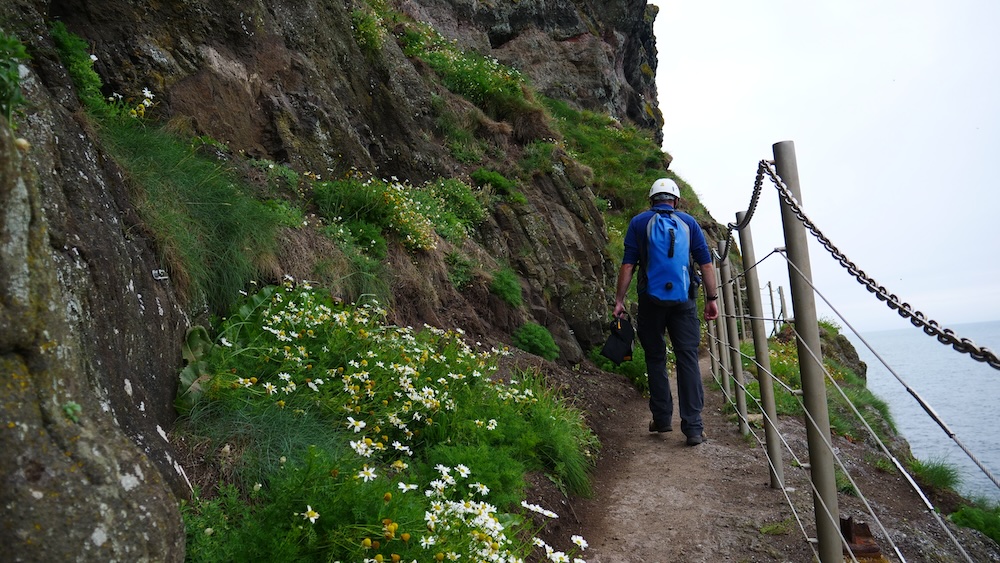
#8 08:00 – Walk the Gobbins Cliff Path
To experience the best of rugged Northern Ireland, you can walk the Gobbins Cliff Path.
Perched on the rugged coast of County Antrim, the Gobbins Cliff Path is not your average scenic stroll. This is a walk that takes you on the very edge of the land. Here the sea meets the sky. Every step reveals a new vista. Engineered marvelously along the basalt cliffs, the path includes bridges, tunnels, and stairways that made me feel like I was part of an epic saga.
The roar of the Atlantic below, the smell of salt in the air, the touch of ancient rock beneath your fingers—it’s all here. Birdwatchers are in for a treat. You’ll have a distinct chance to spot puffins, kittiwakes, and other seabirds nesting along the cliffs.
This unique combination of natural beauty and human ingenuity is what makes the path a must-visit attraction.
This is a complete sensory experience where you can hear the churning of the sea, feel the cool breeze blowing on your face, and admire the native seabirds that call this place home. There are some incredible views to be had here.
Bring a windbreaker because it can really pick up here!
Location: The Gobbins – 77-83 Gobbins Road, Larne

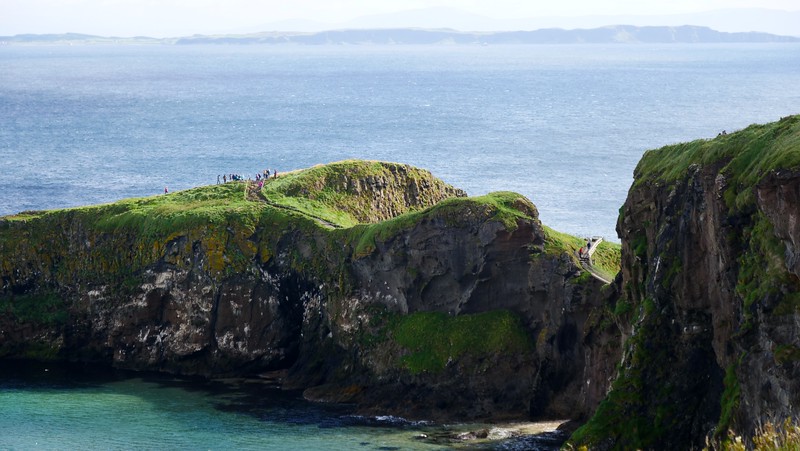

#9 09:00 – Cross Carrick-A-Rede Rope Bridge
Bring your hiking shoes and a pinch (or gigantic heap) of courage to cross Carrick-A-Rede Rope Bridge, which links the mainland to the small island of Carraig a’ Ráid (Rock of the Casting).
Imagine a place where the sea roars below you. And the wind whispers tales of old. Suspended nearly 100 feet above the crashing waves of the Atlantic, the Carrick-a-Rede Rope Bridge challenges you to step out over the open sea as slink your way towards the tiny island of Carrickarede. The experience of crossing is nothing short of exhilarating. It’s the perfect blend of fear and excitement. However, I’m leaning more towards the fear camp.
It was once used by salmon fishermen to access their catch. Now it’s a major tourist attraction. Go figure.
Be warned that this is not for the faint-hearted as there have been instances where visitors have had to be taken off the island by boat because of intense fear of walking back across the bridge.
The suspension bridge, made of Douglas fir and wire, offers some of the best vantage points for landscape photos.
My one tip: keep your eyes fixed straight ahead.
Location: Carrick-a-Rede Rope Bridge – 119a Whitepark Rd, Ballycastle
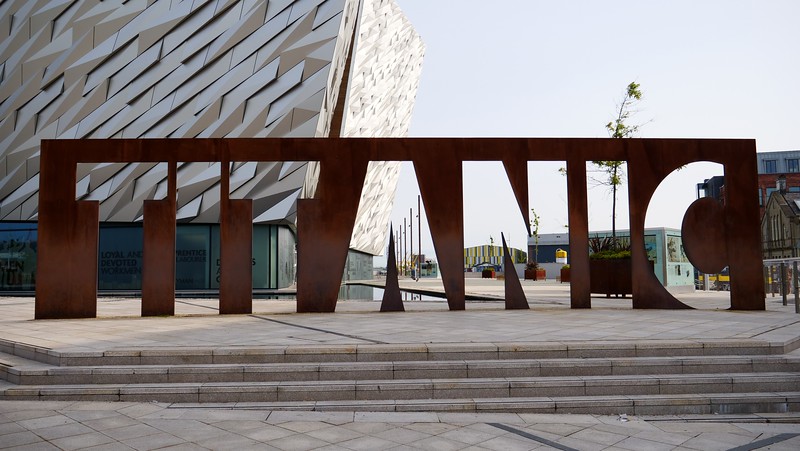
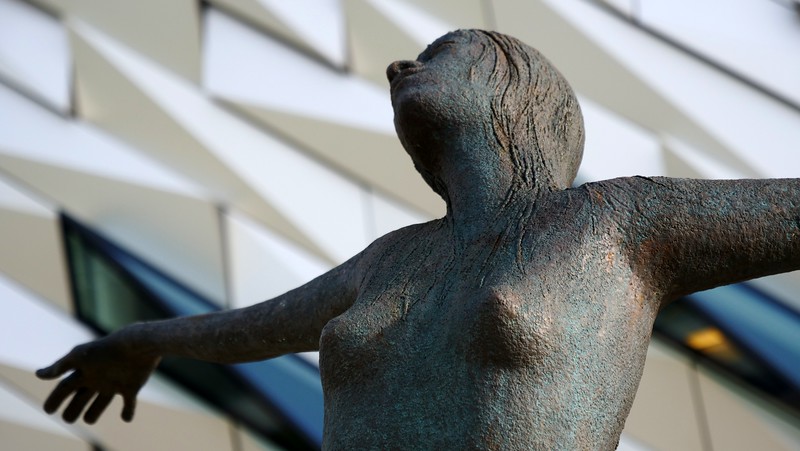
#10 10:00 – Titanic Belfast (Belfast)
If for some reason you only have time for one major attraction in Belfast, without any hesitation visit Titanic Belfast. Its proudly situated on the very slipways where she was built.
Voted the World’s Best Tourist Attraction at the World Travel Awards in 2016, the iconic building shaped like the bow of a ship, offers mesmerizing interactive experiences where you learn about the lives of the workers who built the Titanic along with the passengers and crew who made the fateful voyage.
Visiting is to embark on a journey back in time. Through nine interactive galleries, you’ll follow the Titanic from conception to tragic end. The experience is totally immersive. You’ll notice full-scale reconstructions, interactive displays, and haunting underwater footage of the wreck. It’s both educational and profoundly moving.
Its location is in the Titanic Quarter, a testament to Belfast’s shipbuilding heritage. You’ll gain insight into the city at the turn of the 20th century at the Harland and Wolff shipyard. This is where thousands of workers who built the Titanic.
The building itself is a sight to behold. Its design was inspired by the Titanic’s hull Its shimmering aluminum panels reflect the water and sky, changing with the weather and time of day. Inside, the atrium mirrors the Titanic’s grand staircase. You’ll gain an appreciation of its sense of scale and luxury. This attraction, more than any other, symbolizes Belfast’s regeneration and innovation.
Let’s continue our Northern Ireland travel guide by moving on to #11.
Location: Titanic Belfast – 1 Olympic Way, Queens Road, Belfast (10 am to 5 pm daily)
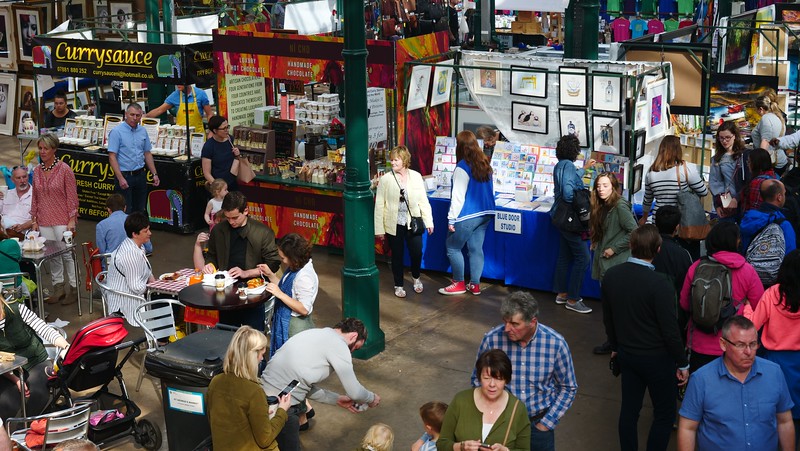

#11 11:00 – Have an Ulster Fry at St George’s Market
Whether you’re looking for a great local food experience or a tasty souvenir to take back home to friends, St George’s Market in Belfast is your best bet.
Come in the morning and have an Ulster Fry for brunch featuring soda bread, potato bread, back bacon, fried eggs, fried mushrooms, sausages, baked beans, hash browns and toast.
It’s a hearty, comforting dish that’ a piece of Northern Irish tradition. Each component is cooked in the same pan. This results in a symphony of flavors. You’ll find it both satisfying and soul-warming.
Boy oh boy, you’ll be satisfied afterwards. Maybe even a bit stuffed, if I’m being perfectly honest. You’ll most likely want to skip lunch! 😉
My tip? Share a table with locals. You’ll hear stories, receive recommendations, and perhaps even glean secrets to making the perfect Ulster Fry.
Location: St George’s Market – 12-20 East Bridge St, Belfast (Fri to Sun various hours)
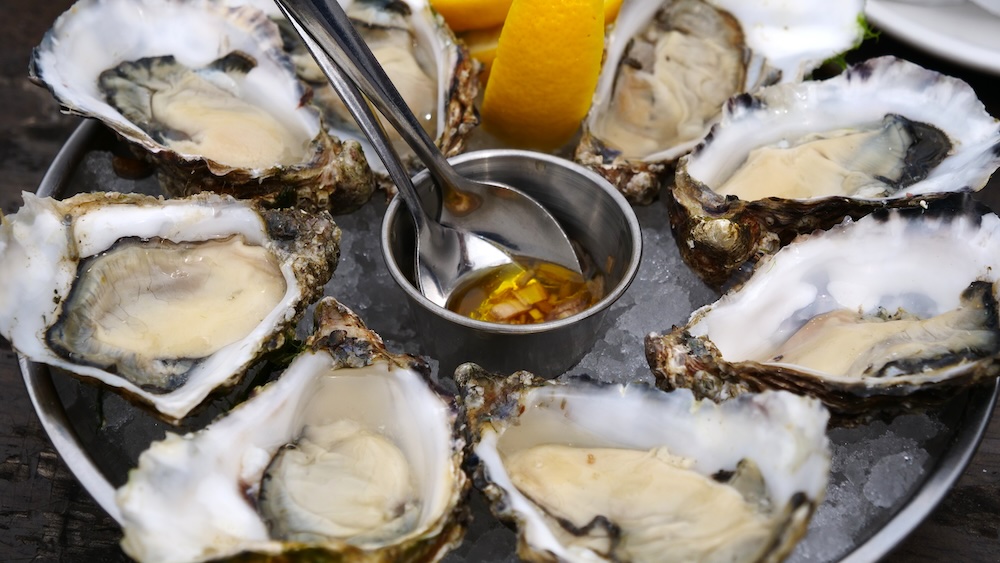
#12 12:00 – Take the Belfast Food Tour
With a burgeoning food scene that is impossible to conquer in mere days, the Belfast Food Tour is a great way to sample some of the best bites and drinks the city has to offer.
Their 4-hour guided walk takes you to some top food and drink spots around Belfast City Centre, plus they also offer gin and whisky tours if boozy tours are more your thing!
It’s not just about the food. You’ll cover a decent amount of Belfast in the process.
And to be perfectly honest, I can’t think of a better way to get acquainted than to nibble my away around a city.
Location: Taste and Tour NI – A1.01 Portview Trade Centre, 310 Newtownards Road, Belfast
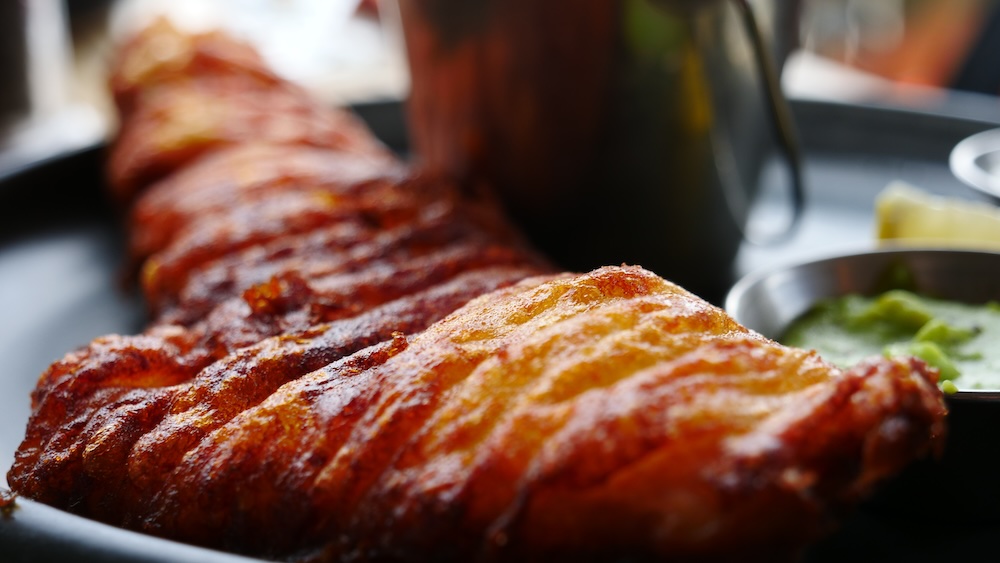
#13 13:00 – Have the fish at Harry’s Shack
Located on the beach, Harry’s Shack is THE spot for local seafood and fish. I had a hankering for fish and chips and it was the best I’ve had in Northern Ireland. Come for the food but consider the views, atmosphere and friendly service the cherry on top.

Its nestled on the sandy shores of Portstewart. It’s all about savoring the freshest fish. And with each bite you’ll be mesmerized by the sound of waves as your backdrop. Here you’ll gain a window into Northern Irish coastal life.
My only regret is that I didn’t have a chance to come back! That’s how good the food was.
Location: Harry’s Shack – 116 Strand Rd, Portstewart (Lunch & dinner hours vary Tues-Sun)
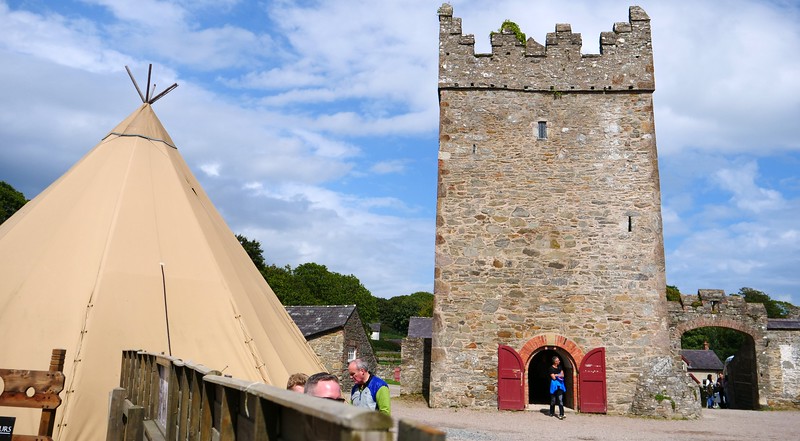
#14 14:00 – Winterfell GOT Experience
The Dark Hedges wasn’t the only GOT destination I visited. Game Of Thrones fans will be glad to know that you can visit Castle Ward to experience Winterfell by dressing up in costume and putting those archery skills to the test.
It’s an immersive journey through the iconic Northern stronghold of the Stark family. And a bucket-list adventure for fans and newcomers to the Seven Kingdoms. Here you walk through the very courtyards and along the paths where Jon Snow, Arya, Sansa, and Bran plotted, trained, and lived.
The attention to detail in recreating the sets is most impressive. From the towering walls of Winterfell to the intimate corners where pivotal scenes unfolded, it’s attention to detail. You’ll get a chance to try your hand at archery. This is the very spot where Jon Snow taught Bran the art. Guided tours reveal the secrets behind the filming. You’ll gain a deeper appreciation for the show’s groundbreaking achievement.
Location: Winterfell Castle & Demesne, Old Castle Ward, Park Road, Downpatrick
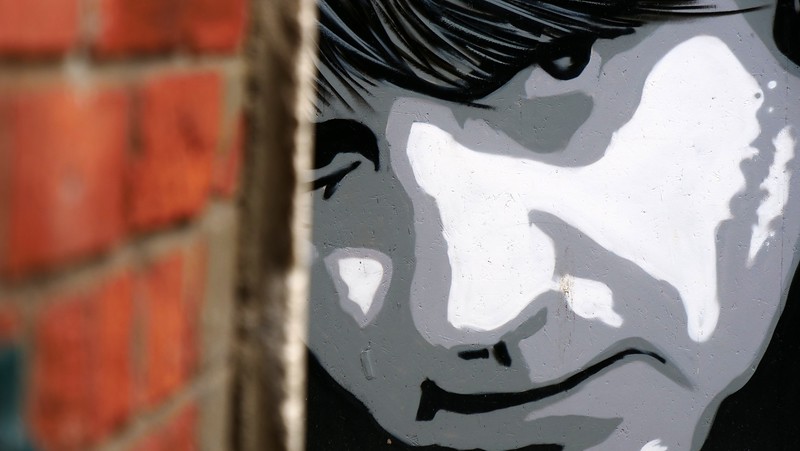
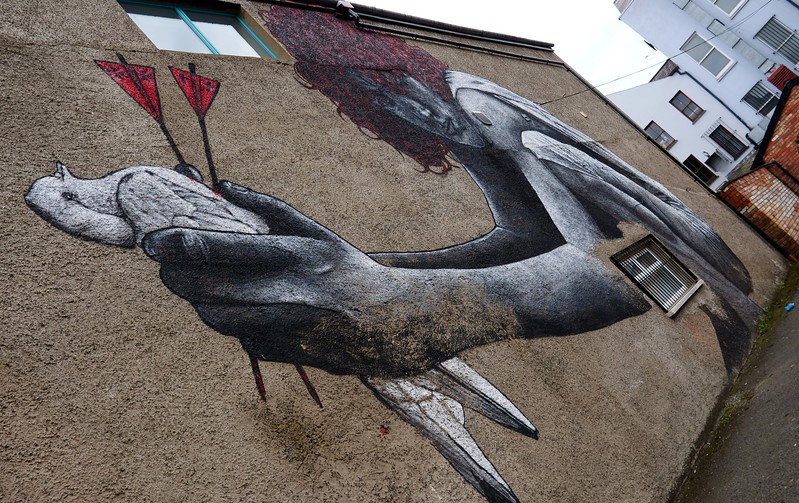
#15 15:00 – Belfast Street Art Tour
I’ve visited many cities around the world with fascinating street art but nothing quite compares to Belfast. Join a tour with a local artist to discover the significance and meaning of various works of art as you stroll around Cathedral Quarter.
It’s impossible not to be drawn into its world. One of color, creativity, and expression that adorns its walls. However, street art in Belfast is not just decoration. It’s a dialogue with the city’s past, present, and future. It offers traveler’s a chance to understand the character, struggles, and spirit of Belfast.
Murals memorialize moments of conflict and celebrate figures of unity. Often they’re about distinct social and political currents that have shaped the city. Local and international artists contribute to this ever-evolving canvas. You’ll notice a range of styles from graffiti to elaborate murals.
Perhaps the most striking aspect of Belfast’s street art is its role as a voice for the community. Murals often arise from collaboration between artists and local residents. They reflect shared hopes, fears, and dreams. This community engagement ensures that the art remains relevant. This is far removed from the typical tourist trail. Walking these streets, you’ll gain an appreciation for the resilience and transformation of Belfast.
Location: Visit Belfast – 9 Donegall Square N, Belfast
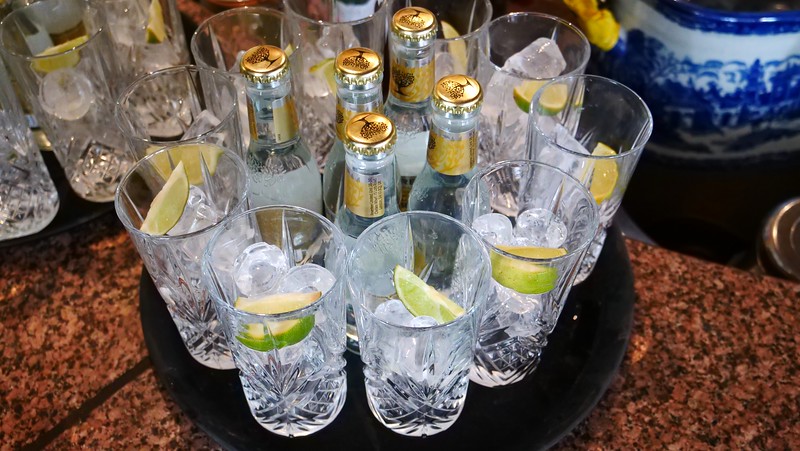
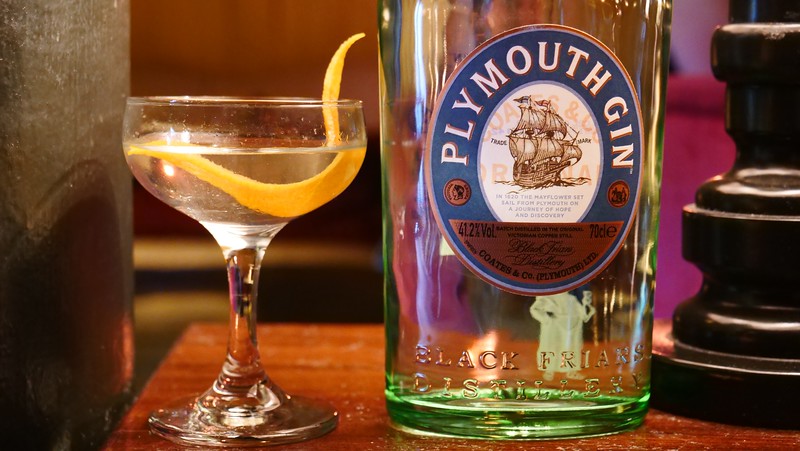
#16 16:00 – Belfast Gin Gaunt
I’ve become a big fan of gin in recent years and if you want to tickle your tastebuds, I’d suggest taking the Belfast Gin Gaunt to work your way around some of the best bars and pubs in the city.
In total, you visit 5 spots sampling 7 different gins including 3 that are locally made.
What makes gin such an important part of Belfast?
It’s about discovering the craft, stories, and people behind Belfast’s burgeoning gin scene. You’ll get the opportunity understand the distillation process. From selecting the perfect botanicals to the final pour. This makes it an educational experience that goes beyond the average tasting. It’s an opportunity to see, smell, and understand the process up close.
Of course, the highlight of any gin tour is the tasting session. Belfast’s gins are known for their unique profiles. Think distinct local botanicals. By taking a tour, you’ll leave with a greater appreciation for the spirit. So, raise your glass to Belfast whilst discovering its gin-making heritage.
Location: Taste and Tour NI – A1.01 Portview Trade Centre, 310 Newtownards Road, Belfast (Mon-Fri 9 am to 5 pm)

#17 17:00 – Boom Board Tour (Derry)
Ever heard of boom boarding before? I hadn’t until visiting Derry.
Long-boarding originated in Hawaii when surfers wanted to take to the streets on wheels; today it’s also a fun way to tour Derry.
The 2-hour tour starts with a lesson in St Columb’s Park and then takes you to the streets and winds up at the famous Walled City Brewery where you can sample local brews coming out of the microdistillery.
So, what exactly is boom boarding?
Boom boarding involves using a longboard—a longer, more stable version of a skateboard—allowing for smoother ride. The “boom” denotes the sound of the wheels hitting the pavement. One of the best things about boom boarding is its accessibility to beginners. You’ll receive a brief training sessions to get you comfortable on the board. Although, If I’m being perfectly honest, I never felt that comfortable on it.
This type of experience offers unique perspective on the city’s sights. Gliding just above the ground you’ll experience the city in a vastly different manner from a typical walking or bus tour. An added bonus is that the tour leaves no carbon footprint. I hope you enjoy it more than I did. I spent most of my time trying not to face-plant.
Location: Far and Wild – St Columb’s Park House, 4 Limavady Rd, Londonderry
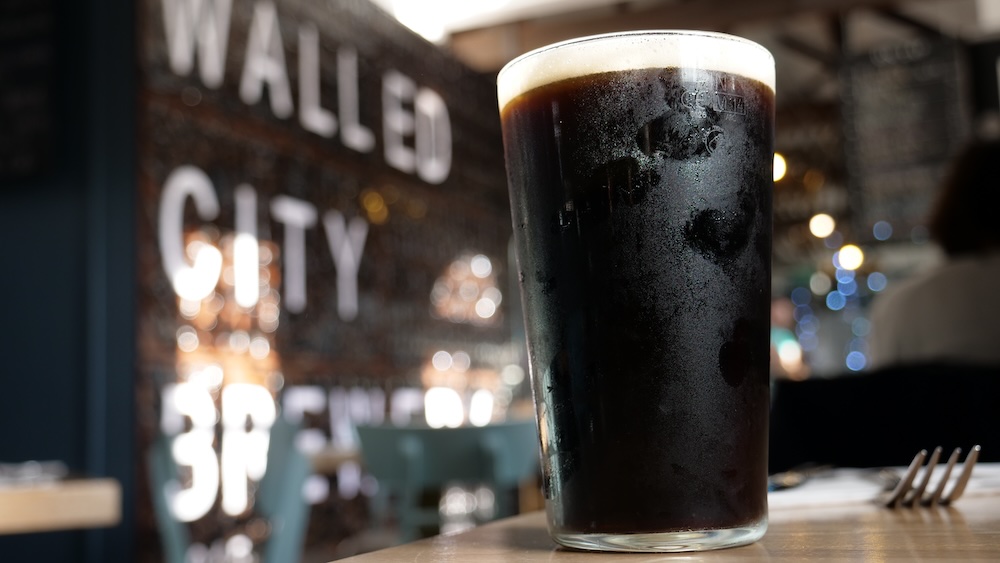
#18 18:00 – Enjoy a craft beer tasting
If you’ve done even a quarter of what I’ve suggested in this article you’ll have worked up a ridiculous appetite at some point. To satisfy your hunger I suggest heading over to the Walled City Brewery in Derry for burgers and craft beers.
The setting of this place is most impressive. Located in a converted army barracks within sight of Derry’s historic walls, the brewery marries the past and the present in its ambiance. The interior pays homage to the building’s heritage. But yet it also has a welcoming aesthetic. It’s a place where the weight of history complements the spirit of innovation.
You’ll discover a range from hoppy IPAs to potent stouts. The burgers also are legendary! Come hungry. Or else you’ll be undoing your belt buckle.
Location: Walled City Brewery – Ebrington Square & Parade Ground, 70 Ebrington Street, Derry-Londonderry BT47 6FA, UK (+44 28 7134 3336)
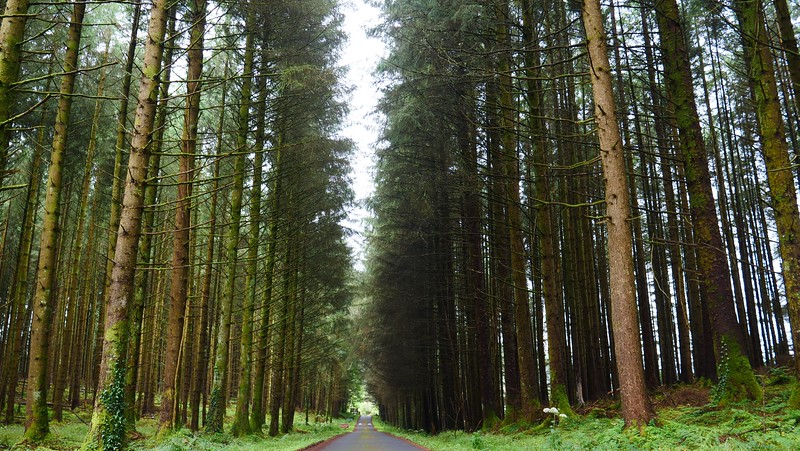
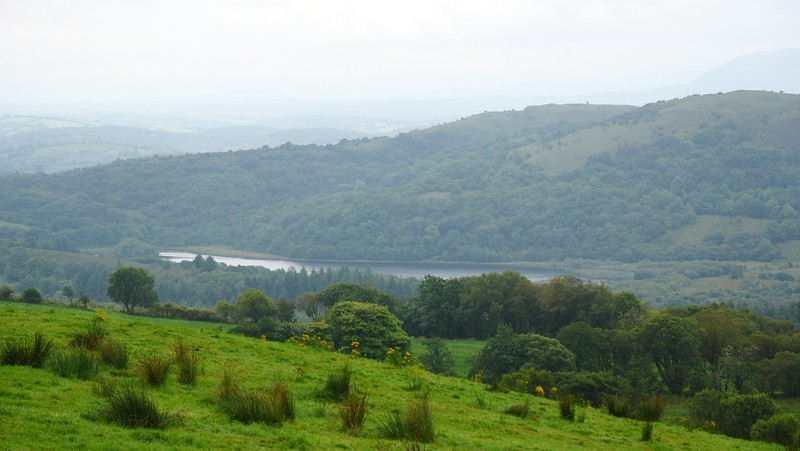
#19 19:00 – Visit Lough Navar Viewpoint
For a walk in the woods check out Lough Navar Forest where you’ll find numerous points of interest including views over Lower Lough Erne, Sperrin Mounts and the west coast of Donegal.
The Lough Navar Viewpoint stands as a testament to nature’s artistry. This hidden gem in Northern Ireland offers more than just a simple walk in the woods. You’ll get to experience the rugged beauty of Donegal’s west coast. It’s where winding paths lead you through a tapestry of green. Whilst its ancient trees whisper stories of the past. You’re invited to slow down and soak in the tranquility.
How about the views?
The panoramic views are simply unmatched. You’re treated to a sweeping outlook over Lower Lough Erne and the Sperrin Mountains. The grandeur of nature is on full display here. Behind the lens, the ever-changing light and vast landscapes present endless opportunities to capture the magic of the Irish countryside.
Let’s move on to the top 20 thing to do in Northern Ireland.
Location: Lough Navar Forest – Glennasheevar Rd, Derrygonnelly, Enniskillen
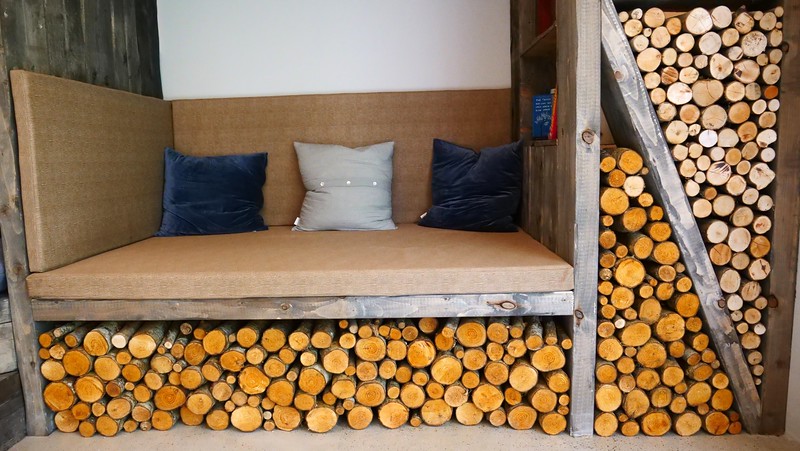
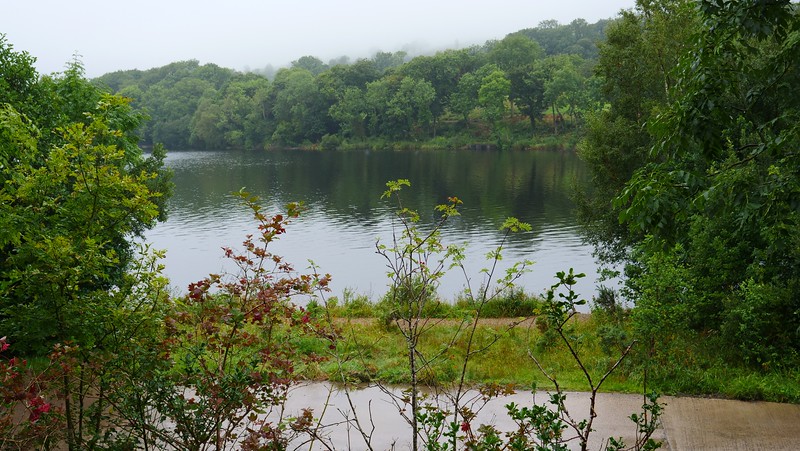
#20 20:00 – Relax with an Outdoor Spa Experience
After that action-packed schedule, I was feeling ready to unwind and Finn Lough Resort proved to be the perfect spot. You can’t go wrong with a natural outdoor spa in a scenic backdrop.
I found myself in a deep state of relaxation. If you’ve been ticking off attractions like a madman use this as an opportunity to slow down. I sure did. And it helped me recharge for other activities.
Location: Finn Lough Resort – Letter Road, Leggs, Enniskillen BT93 2BB, UK (+44 28 6838 0360)
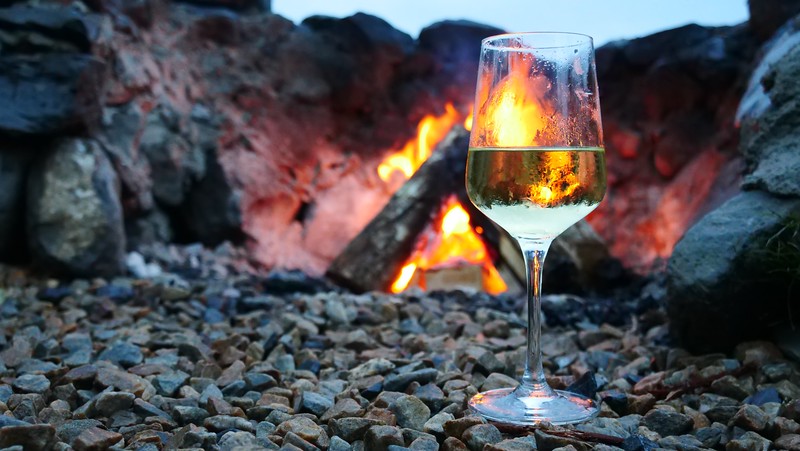

#21 21:00 – Watch sunset over Lough Erne
After my spa experience, I went over to Lough Erne where I enjoyed nightfall over the lake, warmed up my toes over the fire pit, and munched on cheese whilst sipping on wine. It was a magic moment to wind down the day.
What makes Lough Erne so special?
One of Lough Erne’s most mesmerizing features is its collection of over 150 islands. For instance, there is a mysterious monastic site on Devenish Island. Or the wild beauty of White Island with its ancient stone figures. These islands offer a glimpse into both the natural and historical richness of the area.
Lough Erne is a sanctuary for wildlife and nature enthusiasts. The lake’s clean waters and surrounding habitats are home to an abundance of birds, otters, and even the elusive pine marten. Visitors can witness the vibrant ecosystem of Lough Erne up close. It’s a place where the hustle of the outside world fades away.
Location: Finn Lough Resort – Letter Road, Leggs, Enniskillen BT93 2BB, UK (+44 28 6838 0360)

#22 22:00 – Go to Cathedral Quarter for nightlife
The cobbled streets of Cathedral Quarter in Belfast are your best for nightlife when the plethora of bars and pubs become packed on a weekend night. Here you can party the night away while enjoying live music on the streets and raising a pint with friendly locals.
What makes Cathedral Quarter an epic nightlife experience and a top thing to do in Northern Ireland?
Cathedral Quarter brims with an eclectic mix of bars, pubs, and venues. Here you’ll find traditional Irish pubs where the music spills out onto the streets. And if you’re feeling a little bit fancy, contemporary bars serve up innovative cocktails. There’s just an energy here that’s infectious. It draws you in with promises of fun and distinct memories.
Live Music and Entertainment?
A highlight of Cathedral Quarter’s nightlife is its live music scene. Whether you’re into indie, rock, traditional Irish, or jazz, you’re covered. You’ve got intimate gigs in cozy pubs to vibrant performances on larger stages. Cathedral Quarter is also a haven for foodies looking for late-night bites. You’ll find everything from gourmet to street food nibbles.
However, what truly sets the Cathedral Quarter apart is the unmistakable warmth of Northern Irish hospitality. Here, strangers quickly become friends. You’ll feel like you’re at home.
Location: Royal Avenue and the Dunbar Link
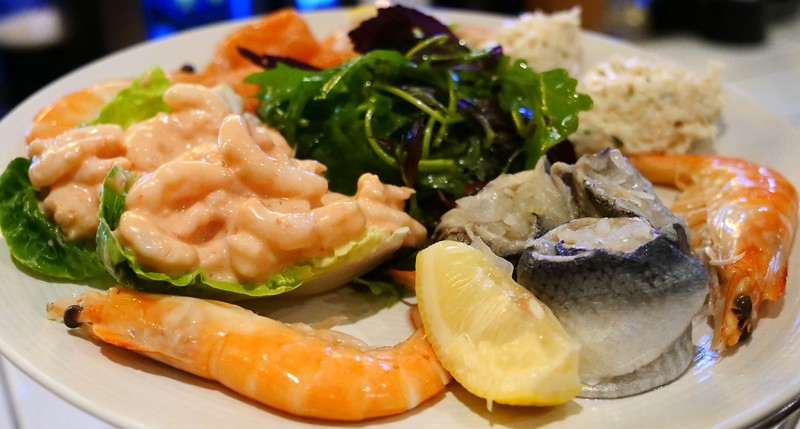
#23 23:00 – Have a late night dinner at Love Fish
For a seafood feast of feasts, head over to Deanes Love Fish which serves a seafood platter for the ages. How could any Northern Ireland travel guide be compete without savouring coastal delights?
My plate was loaded with tasty bites from the sea and I couldn’t help but indulge in a little bit of everything.
In my opinion, there’s something magical about tucking into a late-night dinner. Especially, if it involves seafood. My seafood platter was so abundant and diverse, I felt like ocean at my fingertips. Imagine a plate brimming with a diverse range of fresh delicious seafood. Truly a celebration of the sea’s rich offerings!
Located on Howard Street, the restaurant offers a cozy yet sophisticated ambiance. I couldn’t recommend it more!
Location: Deanes Love Fish – 30-36 Howard Street, Belfast
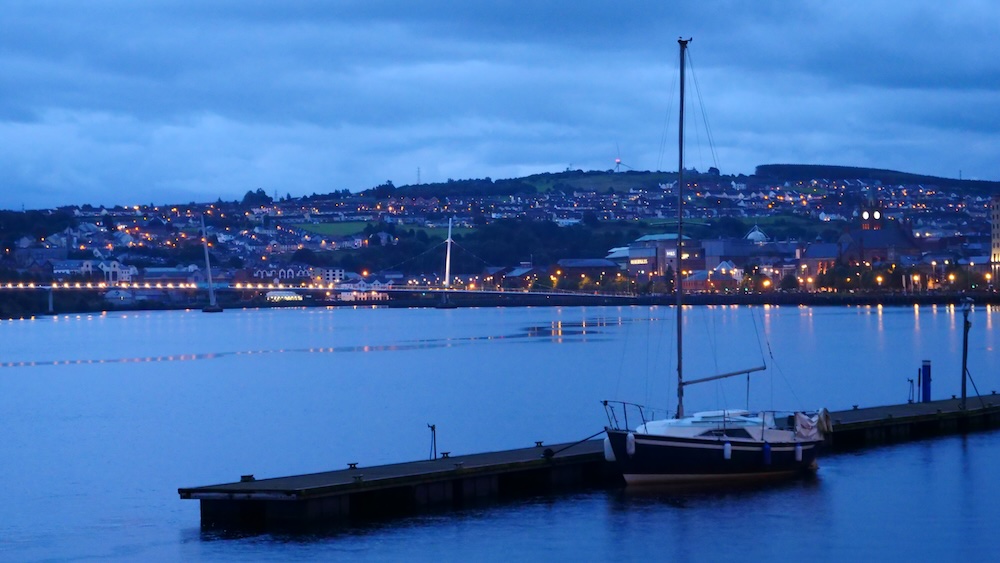
#24 24:00 – Moonlight Kayaking (Derry)
Last but not least, to wrap up this Northern Ireland travel guide, consider a moonlight kayaking experience. Not only is it a good workout but you’ll also have an opportunity to spot wildlife you wouldn’t otherwise see during the day. Some of the highlights include Peace Bridge in Derry, Magilligan Fort and the Roe River under the Binevenagh Mountain.
What makes this experience worth doing?
It’s an extraoridinary adventure. This unique experience combines kayaking with the enchanting atmosphere of the night. Kayaking under the moonlight offers a completely different perspective on some of Derry’s most iconic landmarks. Imagine paddling near the Peace Bridge. Its structure illuminated against the night sky. Or gliding past the historic Magilligan Fort. You get to experience the gentle flows of the Roe River under the shadow of Binevenagh Mountain.
You may even be lucky enough to spot nocturnal creatures going about their nightly routines. The stillness of the night, combined with the minimal disturbance from the kayaks, makes this an ideal way to observe it all. It’s no doubt one of the most adventurous things to do in Northern Ireland.
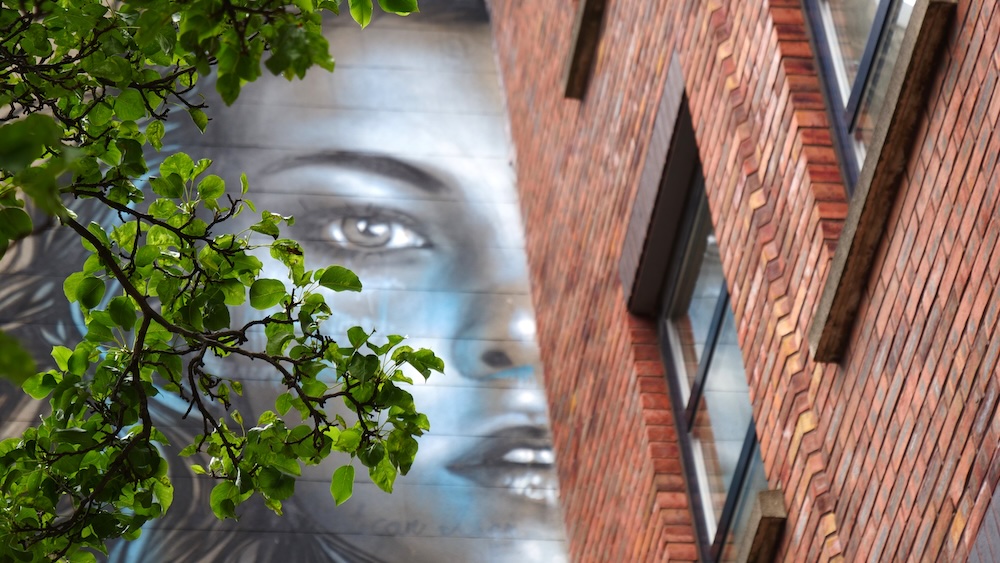
Practical Northern Ireland Trip Planner
You’ve just seen how much you can pack into 24 hours in Northern Ireland. Now let’s make it easy to turn those ideas into a real trip. Less stress. More craic.
Where to Base Yourself
You don’t need to move every night. Pick smart bases and hub out from there.
Best Bases at a Glance
| Base / Region | Vibe | Best For | Ideal Stay |
|---|---|---|---|
| Belfast | Creative city, buzzing nights | First-timers, foodies, nightlife lovers | 2–3 nights |
| Causeway Coast | Wild cliffs, small seaside towns | Road-trippers, photographers, walkers | 2–3 nights |
| Derry~Londonderry | Historic, compact, arty | History buffs, craft beer fans, culture seekers | 1–2 nights |
| Fermanagh / Lough Erne | Lakes, forest, super chilled | Couples, spa time, slow travel | 1–2 nights |
Belfast
Belfast is the easiest place to start. You can walk between many sights, hop on the Glider to reach Titanic Quarter, and finish every night in a pub if you want.
Think: Titanic Belfast, St George’s Market, street art, and Cathedral Quarter for music and pints. Two nights is the minimum. Three gives you time to breathe.
Causeway Coast
This is where the scenery goes all-out. Giant’s Causeway, Carrick-a-Rede Rope Bridge, sandy beaches, and cliff-top walks are all within a short drive of each other.
Good bases: Portrush, Portstewart, or Ballycastle. You’ll have sea views, fish and chips, and easy access to all the coastal highlights.
Derry~Londonderry
Derry is compact and full of character. You can walk the city walls, join a boom board tour if you’re feeling adventurous, and wind down with burgers and craft beer at Walled City Brewery.
One or two nights here slots nicely into a loop between the Causeway Coast and Belfast.
Fermanagh & Lough Erne
This is the slow lane. Forests, lakes, viewpoints, and outdoor spa sessions take centre stage.
Stay near Lough Erne or in a countryside resort. Walk a little. Soak a lot. Watch sunset over the water with a drink in hand. Perfect end-of-trip energy.
Getting To & Around Northern Ireland
Northern Ireland is small enough to manage, but big enough that you’ll want some wheels or a solid plan.
Arriving
Most travellers either:
- Fly into Belfast International or Belfast City
- Arrive by ferry if they’re road-tripping from Britain
From there it’s a short hop into the city by bus, taxi, or transfer. Once you’re in Belfast, you can decide how much you want to rely on public transport versus hiring a car.
Public Transport
Public transport works surprisingly well for a lot of trips. Trains and buses link Belfast to Derry and several towns along or near the Causeway.
Inside Belfast, local buses and the Glider connect the city centre with areas like Queen’s Quarter and Titanic Quarter. If you’re staying in the city, you can get around easily without a car.
Renting a Car
A car gives you total freedom on the coast and in the countryside. You can stop at random viewpoints, chase the light, and detour whenever something catches your eye.
The flip side: left-side driving, narrow country roads, and parking/fuel costs. If that sounds stressful, start car-free in Belfast and only rent a vehicle for the days you’re based along the Causeway or in Fermanagh.
Day Tours vs Car vs Bus
Here’s a quick decision matrix to keep it simple:
| Option | Pros | Cons | Best For |
|---|---|---|---|
| Public transport | Cheap, no parking or fuel hassles | Limited for remote spots, fixed timetables | City stays, solo travellers |
| Rental car | Maximum freedom, easy detours | Left-side driving, narrow lanes, extra costs | Road-trippers, photographers |
| Day tours | No navigation, local stories, no driving | Fixed schedule, per-person price adds up | First-timers, short trips, nervous drivers |
You don’t have to pick just one. Belfast + day tours + a short car rental block is a very relaxed combo.
Daily Costs and Budget Planning
Northern Ireland isn’t ultra-cheap, but it doesn’t have to be ruinous. A lot comes down to where you sleep and how often you book tours.
Rough Daily Budget (Per Person, Excluding Flights)
| Style | Approx Daily Budget | Accommodation | Food & Drink | Extras |
|---|---|---|---|---|
| Budget | £60–£90 | Hostels, basic B&Bs | Supermarkets, takeaways, pub specials | Buses, free walks, 1–2 paid sights |
| Midrange | £100–£160 | Guesthouses, midrange hotels | Mix of cafés, pubs, restaurants | Mix of tours and attraction entries |
| Comfort | £180+ | Boutique hotels, spa resorts | Higher-end restaurants, cocktails, tastings | Day tours, taxis, special experiences |
These are ballpark figures, not strict rules. You can mix budget days and splurge days. You can also save quietly by making small swaps.
Easy Ways to Save
- Stay in B&Bs with breakfast included
- Picnic some lunches with supermarket snacks
- Combine higher-cost days (tours, big attractions) with cheap days (walks, viewpoints, free museums)
- Travel in spring or autumn instead of peak summer if your calendar allows
A few small changes add up fast over a week-long trip.
Eating & Drinking: Structuring Your Food Days
You already know Northern Ireland can deliver on food: Ulster Fry, fresh seafood, craft beer, gin, and cosy pub grub. The trick is timing meals so you’re not starving mid-hike or sitting down for dinner right when the light is perfect on the cliffs.
Simple Daily Food Rhythm
A pattern that works well:
- Breakfast – Big fry or café breakfast before a busy day
- Lunch – Light soup, sandwich, or something easy on the go
- Afternoon – Coffee and a sweet treat (traybake, cake, scone)
- Dinner – Pub meal, seafood feast, or market-style grazing
On days where you’re sampling a lot of drinks (gin trails, brewery visits, late nights in Cathedral Quarter), consider making lunch the heavier meal and keeping dinner lighter. Your next-morning self will be grateful.
Food Moments to Seek Out
Try to include:
- A proper Ulster Fry at least once
- One seafood meal right by the coast
- A warming pub stew or pie after a day outside
- Something sweet and home-baked in a small-town café
These little food rituals give the trip rhythm and make specific days easier to remember later.
Where to Stay: Neighbourhood and Town Guide
A simple room in the right place beats a fancy room in the wrong spot every time.
Belfast Neighbourhoods
| Area | Vibe | Good For |
|---|---|---|
| Cathedral Quarter | Bars, music, cobbles, murals | Nightlife, pub evenings, short trips |
| City Centre | Central, busy, walkable | First-timers, car-free stays |
| Queen’s Quarter | Leafy, studenty, relaxed | Longer visits, museum and café days |
| Titanic Quarter | Modern, waterfront, airy | Families, Titanic-focused trips |
If you want to roll out of a pub and into bed, Cathedral Quarter or City Centre is your zone. If you prefer leafy streets and quieter nights, Queen’s Quarter is a great fit.
Causeway Coast Towns
Along the coast, three bases crop up again and again:
- Portrush – Beaches, restaurants, lively feel
- Portstewart – Another classic seaside town with long walks and views
- Ballycastle – Smaller and quieter but nicely placed for exploring
When booking, look for:
- Parking, if you’re driving
- Breakfast, especially on early start days
- At least one pub or restaurant within easy walking distance
Not having to drive after dinner is a big quality-of-life upgrade.
Lakes and Forests
Around Lough Erne and Fermanagh, think about what you want most:
- Spa time and lake views? Go for a resort-style stay.
- Local pubs and easy walks? A guesthouse in a nearby town works well.
This part of the trip is all about slowing down. Choose a place where doing nothing feels like a valid plan.
When to Visit
You can visit Northern Ireland year-round, but the experience changes with the season.
Spring (March–May)
Days start getting longer. The countryside turns bright green. You still need layers, but there’s a nice balance of daylight and quieter attractions.
Summer (June–August)
Long evenings, mild temperatures, and a good chance of decent weather. It’s great for late cliff walks and dinners that drift into golden hour. It’s also busy, so book popular experiences and stays ahead of time.
Autumn (September–November)
Forests glow, the coast gets moodier, and prices often dip a bit. Showers are common, but cosy pubs and lakeside stays really shine at this time of year.
Winter (December–February)
Short days, but not usually brutal cold at lower elevations. Perfect for city breaks, Christmas markets, museums, and nights in warm bars with live music. Plan daytime activities carefully around the light.
If it’s your first visit and you’re keen on outdoor sights, late spring, early summer, or September are sweet spots.
Plug-and-Play Itineraries
You’ve already got a long list of things to do. Here’s how they can flow as real trips.
3-Day Taster
Day 1 – Belfast
- Check in and wander the city centre
- Grab a fry or snack at St George’s Market
- Visit Titanic Belfast and the waterfront
- Cocktails at The Merchant Hotel
- Live music and pub-hopping in Cathedral Quarter
Day 2 – Causeway Highlights
- Early start to the Causeway Coast
- Walk Giant’s Causeway before or after the big crowds
- Brave Carrick-a-Rede Rope Bridge
- Lunch of fish and chips near the sea
- Optional Dark Hedges / Game of Thrones stop
- Return to Belfast for a chilled evening
Day 3 – Food and Final Strolls
- Join a food tour in Belfast
- Explore Queen’s Quarter, Botanic Gardens, or museums
- Fit in a gin experience or one last pub session if time allows
5-Day City, Coast & Derry
Days 1–2 – Belfast
- Mix Titanic Belfast, St George’s Market, street art, Cathedral Quarter, and some of your favourite experiences from the list
Day 3 – Move to the Coast
- Travel to Portrush/Portstewart/Ballycastle
- Visit Giant’s Causeway and coastal viewpoints along the way
Day 4 – Coast and Catch & Sea
- Early Catch & Sea tour and breakfast
- Free afternoon for beach walks, cliff paths, or cafés with views
Day 5 – Derry
- Head to Derry
- Walk the city walls or try boom boarding
- Craft beers and dinner at Walled City Brewery before moving on or looping back to Belfast
7-Day Slow Loop
With a week, you can stretch everything out:
- 2–3 nights Belfast for city life, food and drink, and museums
- 2–3 nights Causeway Coast for cliffs, rope bridges, coastal walks, and fishing trips
- 1–2 nights Derry or Lough Erne for history or lakes, forests, and spa time
By the end you’ll have ticked off big-name sights, eaten your way through markets and seaside cafés, and had at least one slow evening by the water watching the sky change colour.
Put this practical layer under the 24 experiences and the trip suddenly feels easy. You’re not just dreaming about Northern Ireland anymore. You’re ready to go.
Northern Ireland travel questions answered: planning tips, seasons, safety and must-see spots
How many days do you really need in Northern Ireland for a first trip?
Honestly? Five to seven days is the sweet spot for a first trip. With about a week you can base yourself in Belfast for a few nights, spend time on the Causeway Coast for cliff walks, castles and rope bridges, and add a night or two in Derry or the lakelands. If you only have three or four days, I’d focus on Belfast plus a full-day Causeway Coast trip and skip the deep detours. If you’re the slow-travel type and want time for food tours, road trips and rainy-day museums, 10 days in Northern Ireland will feel amazing rather than excessive.
What is the best time of year to visit Northern Ireland for decent weather and fewer crowds?
Generally, the shoulder seasons are your friend. April–May and September–October tend to offer a nice balance of mild temperatures, long-ish days and fewer peak-season crowds compared with July and August, which are busier and pricier. Winter can be atmospheric (and cheaper), but you’ll get short days, more rain, and some attractions on limited hours. Whatever time you pick, pack for four seasons in one day: sunny spells, showers and wind can all show up within an afternoon.
Is Northern Ireland safe to visit right now?
Yes. For most visitors, Northern Ireland feels welcoming, easygoing and no more dangerous than other parts of the UK or Ireland. The main things you’ll realistically watch out for are standard city issues: pickpocketing, bag snatching and petty theft around busy areas, pubs and public transport. There is still a “substantial” terrorism threat level, but incidents are rare and typically aimed at police or military targets, not tourists. The biggest practical tips: keep valuables zipped away, avoid getting into political or religious debates with strangers, follow local advice about any marches or demonstrations, and stick to licensed taxis at night.
Do I need to rent a car in Northern Ireland, or can I rely on public transport and tours?
Not necessarily. If you’re happy to stick mostly to cities and big-ticket sights, you can get around using Translink’s bus and train network, which links Belfast with places like Derry, Portrush, Coleraine and other hubs, plus cross-border services to Dublin. From those bases you can join day tours to the Giant’s Causeway, Carrick-a-Rede Rope Bridge and other Causeway Coast highlights. That said, renting a car gives you far more freedom for sunrise missions, cliff walks, spontaneous photo stops and rural viewpoints. If you’re comfortable driving on the left and dealing with narrow roads, a car turns Northern Ireland into a very fun road-trip destination.
Where is the best place to base myself for exploring Belfast, the Causeway Coast and Derry?
Personally, I like to mix it up. Belfast makes a brilliant first base for nightlife, food tours, Titanic Belfast and day trips, because most tours start there and public transport is great. Then I’d shift to a coastal base like Portrush, Portstewart or Ballycastle for a couple of nights so you’re close to the Giant’s Causeway, Carrick-a-Rede, Gobbins and cliff paths without constant long drives. Derry works well as a final stop if you’re interested in city history, murals and craft beer, or if you’re looping back toward Donegal or the northwest. If you only have a long weekend, just base yourself in Belfast and bolt on one big Causeway Coast day trip.
Do I need to book the Giant’s Causeway in advance, and is it free to walk on the stones?
Yes. If you want the full Visitor Centre experience (exhibits, guided tours, parking etc.) it’s now strongly recommended to pre-book a timed ticket online; this helps manage crowds and usually gives you the best price. The actual stones and coastal path are part of the coastline, so walking on the Causeway itself is technically free, but if you arrive by car and use the official car park and Visitor Centre, you’ll pay for that. If you’re on a budget, you can come on foot or by public bus, walk down to the causeway and enjoy the rocks and views without entering the Visitor Centre, but you’ll miss the interpretive side of things.
I am scared of heights – should I still bother with Carrick-a-Rede Rope Bridge and the Gobbins Cliff Path?
Maybe. If your fear of heights is mild and you’re up for a little adrenaline, both experiences can be unforgettable: Carrick-a-Rede is short but airy, with the sea crashing below, while the Gobbins path hugs the cliffs with railings and solid engineering. If vertigo or exposure really bothers you, you might enjoy the scenery just from the viewpoints and coastal trails without stepping on the bridge or the most exposed sections of the cliff walk. There are plenty of other Causeway Coast walks and viewpoints that feel dramatic without putting you far above the water on a swinging bridge, so do not force it just because it looks good on Instagram.
Is Northern Ireland a good destination for kids and families?
Definitely. Kids tend to love castles, beaches, rope bridges, boats and slightly spooky stories, and Northern Ireland has all of that. A day at the Giant’s Causeway clambering over rocks, a visit to the Titanic experience, a food market lunch, or a walk on a safe section of beach can easily fill a family itinerary. Some activities (like Gobbins Cliff Path or certain adventure tours) have age or height restrictions, so always double-check before you book, and factor in weather: wind and rain can make exposed sites uncomfortable with younger children. For haunted castles and Game of Thrones–style experiences, you know your kids best; if they’re sensitive, keep things light and fun rather than full horror.
What kind of budget should I expect for a one week trip to Northern Ireland?
Roughly, Northern Ireland sits in the “not cheap, not insane” category compared with the rest of the UK and Ireland. At a mid-range level, many travellers find that £120–£180 per day for two people (around £60–£90 each) covers a comfortable guesthouse or small hotel, meals out, attraction tickets and some tours. Shoestring backpackers can bring that down by cooking, using public transport and staying in hostels or basic B&Bs, while those leaning into boutique hotels, cocktail bars and multiple guided tours can easily double it. The pound sterling is the currency, so if you’re coming from the eurozone, US or Canada, always check the latest exchange rate and watch for dynamic currency conversion when you pay by card.
What should I pack for a trip to Northern Ireland, realistically?
Layers. Always layers. Think a light base layer, a warm mid-layer (fleece or wool), and a waterproof outer shell you can throw on when the Atlantic decides to misbehave. Comfortable waterproof walking shoes or boots are worth their weight in gold for cliff paths and wet pavements. I’d also pack a compact umbrella, a warm hat, gloves outside of high summer, quick-drying socks and a small daypack with a dry bag or ziplock for your camera/phone. Even in July and August it rarely gets “hot hot”, so you’re better off with breathable layers than lots of summery outfits you never wear.
Can I visit Northern Ireland as a day trip from Dublin, or is that a bad idea?
Technically, yes. There are plenty of long day tours from Dublin that dash up to Belfast or the Causeway Coast and back in a single (very full) day. For a quick taste, that can work, especially if you’re short on time and just want to see a couple of headline sights. But. It is a long day on the road, and you’ll barely scratch the surface. If you can carve out even one night in Belfast or on the coast, you’ll see more, move slower and actually feel the place instead of just ticking it off between fuel stops.
Are the Game of Thrones experiences worth it if I am not a superfan?
Surprisingly, yes. Many of the GOT-related spots double as genuinely beautiful filming locations: beech-tree tunnels, rugged coastlines, castles and forests that are impressive even if you have never heard of House Stark. Dressing up, doing archery or walking through “Winterfell” can feel more like playing than fandom, and guides usually balance show trivia with local history and landscape stories. If you truly do not care about the show at all, I’d pick one lighthearted themed stop at most, and spend the rest of your time on more general nature, history and food experiences.
How should I behave around murals, political areas and local history sites in Northern Ireland?
Gently. You’re walking through living history, not just colourful backdrops. In Belfast and Derry especially, many murals and memorials relate to The Troubles and to communities that still feel those stories very deeply. Ask before taking close-up photos of people, avoid posing in silly ways with sensitive imagery, and don’t treat memorials as photo props. It’s also wise to avoid joking about politics, religion or flags, and to listen more than you talk if a local shares their experience. Guided tours are a great way to learn context so you’re not accidentally wandering into a contentious spot without understanding it.
What are some underrated experiences in Northern Ireland beyond the big headline attractions?
Plenty. Once you have hit Belfast, the Giant’s Causeway and a rope bridge, I’d look at slowing down in the lakelands of Fermanagh, heading for forest parks and viewpoints like Lough Navar, exploring sleepy harbour towns along the coast, or spending a day on island boat trips and inland waterways. Inland drives, farm shops, local bakeries and markets are also where you start to feel everyday Northern Irish life rather than just the highlight reel. Public transport and regional buses can get you to more low-key towns and countryside spots, especially if you combine them with short walks or taxi hops from the nearest stop.
How does tipping work in Northern Ireland in pubs, restaurants and on tours?
Relax. Tipping culture here is much less intense than in North America. In pubs, you generally do not tip per drink; if service has been especially friendly, you might say “and one for yourself” and let the bartender add a small amount, or leave some change in a jar. In restaurants, a 10–12% tip for good service is appreciated but not compulsory, and sometimes it’s already added as a service charge on larger tables, so always check the bill. For tours, tipping your guide a few pounds per person at the end of a half- or full-day tour is a nice gesture if they were excellent, but again, it is discretionary rather than an obligation.
Is the tap water safe to drink in Northern Ireland, and what about food safety?
Yes. Tap water in Northern Ireland is safe to drink, and most locals drink it without a second thought, so refilling your bottle is totally fine. Restaurants, markets and food tours operate under UK food hygiene standards, so the usual common sense applies: follow your nose, favour busy places with a good turnover, and be cautious with anything that has been sitting out uncovered. The bigger adjustment for many visitors isn’t safety, it’s richness—between Ulster Fry breakfasts, fresh fish and chips, sourdough, cheese and craft beer, your stomach may need a vegetable day now and then.
Final Thoughts: Epic Journey Through Northern Ireland
It’s hard to believe our journey is over. It’s the best of Northern Ireland with 24 amazing things to do!
From the rugged cliffs that have stood the test of time to the warm smiles that greet you in every town, Northern Ireland is a crowd pleaser. Savour each experience. Whether it’s standing atop the Giant’s Causeway, exploring the haunting beauty of the Dark Hedges, or simply enjoying a pint with new friends.
Northern Ireland is a storyteller’s dream. A place where you can walk in the footsteps of giants. And chase the ghosts of the past. What truly sets Northern Ireland apart is its people. The warmth of the welcome here is unmatched. Northern Ireland, with its 24 incredible things to do, is just the beginning of an adventure that continues to unfold, an invitation to return that’s impossible to resist.
Location: Far and Wild – St Columb’s Park House, 4 Limavady Rd, Londonderry
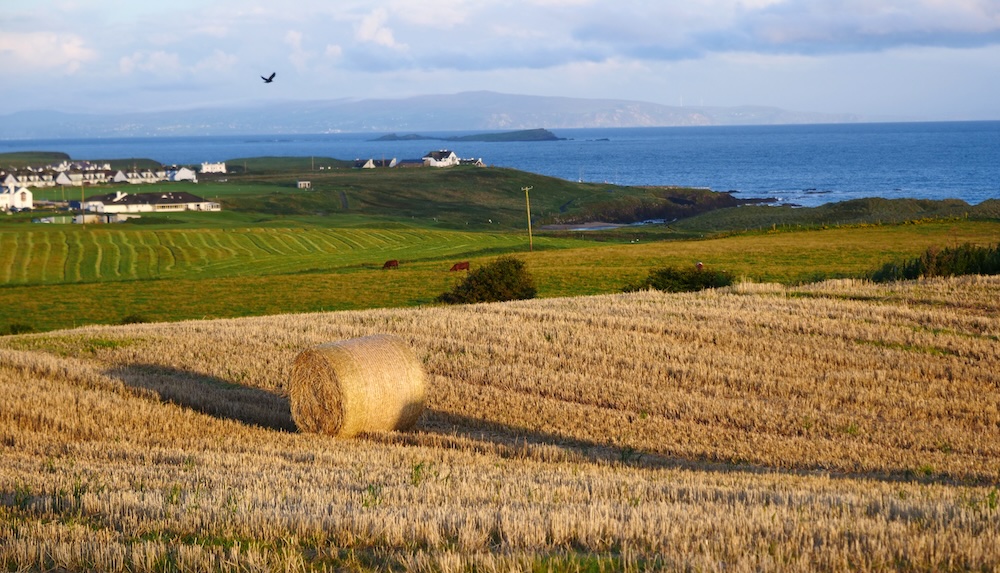
Have you been to Northern Ireland?
Tell us about some of your favourite experiences there?
What else should we have included in our Northern Ireland travel guide?
What are some of your favourite things to do in Northern Ireland?
Please let us know in the comments below!
The trip was brought to you as part of the #lovegreatbritain campaign, created and managed by iambassador in partnership with Visit Britain and Discover Northern Ireland.


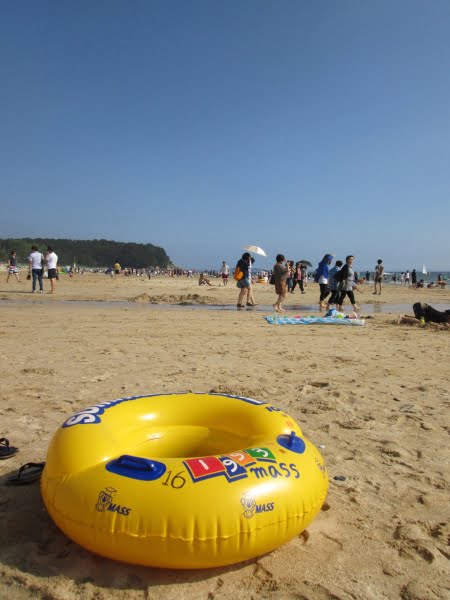


What a fantastic guide! I can’t wait to explore all the beautiful locations you’ve highlighted in Northern Ireland. The tips on local attractions and hidden gems are super helpful. Thanks for sharing, I’m starting my travel plans right away!
What a fantastic guide! I’ve always wanted to explore Northern Ireland, and your list of 24 things to do has definitely inspired me. The tips on places to visit and local experiences to try are super helpful. Can’t wait to plan my trip!
This blog post is fantastic! I had no idea there were so many incredible things to do in Northern Ireland. The tips on the Giant’s Causeway and the stunning scenery around the Mourne Mountains have me excited to plan my trip! Thank you for sharing such detailed insights!
Great list! I’m especially excited to explore the Giant’s Causeway and learn more about the beautiful landscapes of Northern Ireland. Thanks for the tips!
This guide is fantastic! I had no idea there were so many amazing things to do in Northern Ireland. I’m especially excited to see the Giant’s Causeway and explore the Causeway Coastal Route. Thanks for sharing these tips!
What a fantastic guide! I can’t wait to explore the stunning landscapes and rich history of Northern Ireland. The tips on local cuisine and hidden gems are especially helpful. Thank you for sharing!
I absolutely loved this guide! The variety of activities listed makes it clear that Northern Ireland has something for everyone. I can’t wait to explore the Giant’s Causeway and the beautiful landscapes of the Mourne Mountains. Thanks for sharing such a comprehensive list!
Thank you for this amazing post! The insights you’ve shared will definitely help me enhance my business approach.
This is exactly what I was looking for! Thanks for sharing such a useful post for business owners like me.
Your post has been a huge help! I’m looking forward to implementing your tips and seeing the impact on my business.
I can’t get over how well-written and impactful this post is! Every word seems to carry a purpose, and the message behind it is incredibly strong. It’s rare to find content that is so engaging and meaningful at the same time. Thank you for sharing your thoughts with us!
Every time I see your posts, I feel inspired. Your content is always so refreshing!
You never fail to impress.
Thanks for sharing! This post contains valuable insights that will definitely help my business.
“This is such a well-thought-out and beautifully executed post. Your talent and effort never cease to amaze me. Keep up the amazing work!”
This is such a meaningful and impactful post. Amazing!
This is incredibly insightful—thank you for sharing.
“Your work always stands out! It’s so unique and full of life – absolutely love it.”
“Such a comprehensive guide! Northern Ireland has so much to offer. The Giant’s Causeway and Dark Hedges are definitely on my list, but which activity or spot would you say is the hidden gem that travelers often overlook? Excited to explore!”
This is a fantastic guide! Northern Ireland has so much to offer, from its breathtaking landscapes to rich history and vibrant culture. The list of things to do is so well-rounded, and it makes me want to explore all the hidden gems mentioned. The tips for each destination really highlight the unique experiences that Northern Ireland provides. Thanks for sharing such an amazing resource for travelers!
“This guide is fantastic! Northern Ireland has so much to offer, and I love how you’ve covered such a variety of activities, from exploring scenic landscapes to diving into local culture and history. Can’t wait to try out some of these recommendations on my next trip—thank you for the inspiration!”
“Such a great guide! Northern Ireland has so much to offer, from the stunning Giant’s Causeway to the vibrant culture in Belfast. I loved how you highlighted both the iconic sights and the hidden gems. Can’t wait to plan my trip and check out all these amazing spots. Thanks for the fantastic recommendations!”
Thank you for this insightful post! I really appreciate the detailed information and helpful tips you’ve shared. It’s clear you’ve put a lot of effort into making this valuable for readers. Keep up the great work!
Great list, Samuel! Northern Ireland looks amazing, and I love the variety of experiences you’ve highlighted. Can’t wait to add these to my travel bucket list!
“This guide is packed with incredible things to do in Northern Ireland! The mix of natural beauty, historic sites, and local culture makes it a perfect destination for any traveler. I’m definitely adding the Giant’s Causeway and the Dark Hedges to my bucket list. Thanks for such an informative and inspiring post!”
“Awesome guide! Northern Ireland has so much to offer, and your list of 24 things to do highlights its incredible beauty and rich culture. From the stunning landscapes to historical sites, there’s something for everyone. I can’t wait to start planning my trip! Thanks for the inspiration!”
Just read the “Northern Ireland Travel Guide: 24 Things to Do”—so inspiring! The variety of activities is amazing. Can’t wait to plan my trip!
“This guide is fantastic! Northern Ireland has so much to offer, from stunning landscapes to rich history. I love the variety of activities you’ve highlighted—definitely adding some of these to my travel bucket list. Thanks for the great recommendations!”
“Fantastic guide! Northern Ireland has so much to offer, from its stunning landscapes to its rich history. I’d love to know, what would you recommend as the top must-visit spot for someone with only a couple of days to explore?”
This guide is fantastic! Northern Ireland has so much to offer, and this list covers a great mix of activities and sights. From scenic landscapes to cultural experiences, I’m excited to explore these recommendations on my next trip. Thanks for putting together such a comprehensive guide!
“Fantastic guide to Northern Ireland! There’s so much to see and do—your list makes it all the more exciting to plan a trip. Do you have a personal favorite from the 24 things to do, or any hidden gems you’d recommend adding to the itinerary?”
Your description of Lough Erne’s islands is captivating! You’ve beautifully captured the allure of these hidden gems, from the mystique of Devenish Island to the ancient beauty of White Island. It’s clear you have a deep appreciation for the natural and historical wonders of the area. Well done!
“This Northern Ireland travel guide is fantastic! The list of 24 things to do provides such a great mix of attractions and experiences. From stunning landscapes to cultural highlights, it’s a perfect resource for anyone planning a trip to this beautiful region. Can’t wait to explore!”
“Fantastic guide! 🇬🇧✨ Northern Ireland has so much to offer, and your list of 24 things to do covers a great mix of attractions and experiences. Thanks for sharing these awesome recommendations and helping travelers make the most of their visit!”
“Fantastic guide! 🌄🇮🇪 Northern Ireland has so much to offer, and these 24 recommendations are a great way to explore its beauty and culture. I’m definitely adding these to my travel itinerary. Thanks for the comprehensive and inspiring list!”
Great post! Your Northern Ireland travel guide is incredibly comprehensive and full of fantastic suggestions. The list of 24 things to do covers a wide range of activities and sites, making it a perfect resource for anyone planning a visit. Thanks for sharing such valuable and detailed information!
What an outstanding travel guide! Your list of 24 things to do in Northern Ireland is both comprehensive and inspiring. Thanks for sharing such detailed insights and tips—this post is a fantastic resource for anyone planning to explore Northern Ireland
Hi. I really loved your content. Its so informative.
thanks for sharing your experience, I’m visit Ireland very soon..
I’m really impressed on how beautiful Northern Ireland is, surely I’m visiting there some day
really interesting post, thanks. I didn’t expect Northern Ireland to be so beautiful
Ireland is already at the top of my bucket list, and I can’t wait to visit!Wow, everything appears to be very mysterious! continue to share with us
One of the highlights of a trip to Northern Ireland is to visit the Ards Peninsula (about 10 miles south of Belfast). Begin with driving or walking up Scrabo Hill just outside of Newtownards and then going up to the top of the Scrabo Tower – on a good day you can see the whole of County Down, Belfast City, across the Irish Sea to the Isle of Man and the coast of Scotland.
Later a leisurely drive down the peninsula road towards the village of Portaferry, with Strangford Lough on your right hand side. It is the largest sea inlet in the British Isles, covering 150 km², full of bird life and in places seal colonies. On the left is the jewel in the crown of the National Trust – Mount Stewart (Voted as one of the top ten gardens in the world, Mount Stewart reflects a rich tapestry of design and planting artistry bearing the hallmark of its creator. Edith, Lady Londonderry’s passion for bold planting schemes coupled with the mild climate of Strangford Lough allows rare and tender plants from across the globe to thrive in this celebrated garden, and some really quirky sculptures to be seen.)
Beyond Mount Stewart is the village of Greyabbey, with the ruins of a Norman Cistercian monastery at one end and a host of antique shops at the other; as well as several places to enjoy a lunch.
The next village Kircubbin now boasts a new distillery called ‘Echlinville’ which can be toured. They have produced award winning gin and poitin whiskey.
The final destination is the quaint village of Portaferry with its aquarium.
And that is only one side of the peninsula… You can either explore the other side, the Irish Sea coastline, or cross the Lough by ferry to the historic Strangford village and explore into St Patrick’s Country and head south towards Newcastle and the world famous Mountains of Mourne.
We have explored this area over several visits and believe me when I say that it is a world apart from the hustle and bustle of Belfast City.
Yes.
Definitely.
I’m British so Belfast isn’t that far however, there’s a slight snag since I actually live in Berlin!
The last time I went to Belfast was about 13 years ago though. Eek!
I was just looking for somewhere to go over the summer, when easyJet popped up with a flight from Berlin to Belfast for €8.00!
Er. Yes please!
After that, I just decided that we might as well visit the rest of Ireland, especially since my stepmum is half English / half Irish and her dad came from the “Old Country” so to speak, so off we went!
I’m a Game of Thrones freak but GOT wasn’t a thing then, more the Titanic, which I love anyway!
‘Nice one mate!
Wow, it all seems so mystical! Ireland is way up high on my bucket list already, now I’m definitely itching to go! keep sharing with us
Wow the dark hedges look amazing!! I can’t wait to go one day. Also, I didn’t even realize it was possible to sleep in a haunted castle! Though, I imagine you can’t do much sleeping….
Big Game of Thrones fan here. I would love to geek out at some of these spots. That coastal scenery is also breathtaking! Thanks for this cool guide.
Cheers for this Article! It looks as though there is a lot of exciting activities in Northern Ireland. The Giant’s Causeway would be out of this world at sunrise!
Sleeping in a haunted castle – sign me up! Definitely my cup of tea.
Absolutely stunning pictures, and the people in Ireland are friendly greeting as family when tourists go into the country. Thank you for the post.
I felt for a moment that I came back to the classic era a truly amazing journey
Thanks for sharing with us
Awesome! These are all great experiences I should try someday. Thank you for sharing.
It looks like it was a real adventure! I always wanted to come here, but I did not know what kind of activities to do. Thanks for tips!
Great tips! I will try them on my Northern Island expedition!
I am soo jealous! Northern Ireland has been on my Travel List for awhile but I am still on my Asian countries list, I can’t wait to go there!
Wicked guide, I really want to hit the dark hedges and Ballygally…been meaning to get over to Ireland for ages now but I never do, even though I go to the UK every year and it’s so close. This year I really need to make it a point, and definitely going to try to hit some of these on the guide. Plus…fellow GoT nerd…so I really need to!
Hi Sam !
I really loved the way you the experience over your pictures.
Very creative way to tell a story.
The place looks fantastic, it was just what I was looking for.
Cheers buddy!
What a spectacular adventure, Sam! This was so much fun to read! Sorry I’ve been out of touch for such a long time my friend! Hockey season is coming up! 🙂
great pics, congrats!!
I’d always thought that it would be Giant’s causeway that would get me to Northern Ireland, but, no, its going to be the food..
Wow, it all seems so mystical! Ireland is way up high on my bucket list already, now I’m definitely itching to go!
Wow! seems like you enjoyed a lot. In next summer I am planning to go to Amsterdam and Barcelona, but after reading this I am planning to go Ireland too. Thanks Samuel.